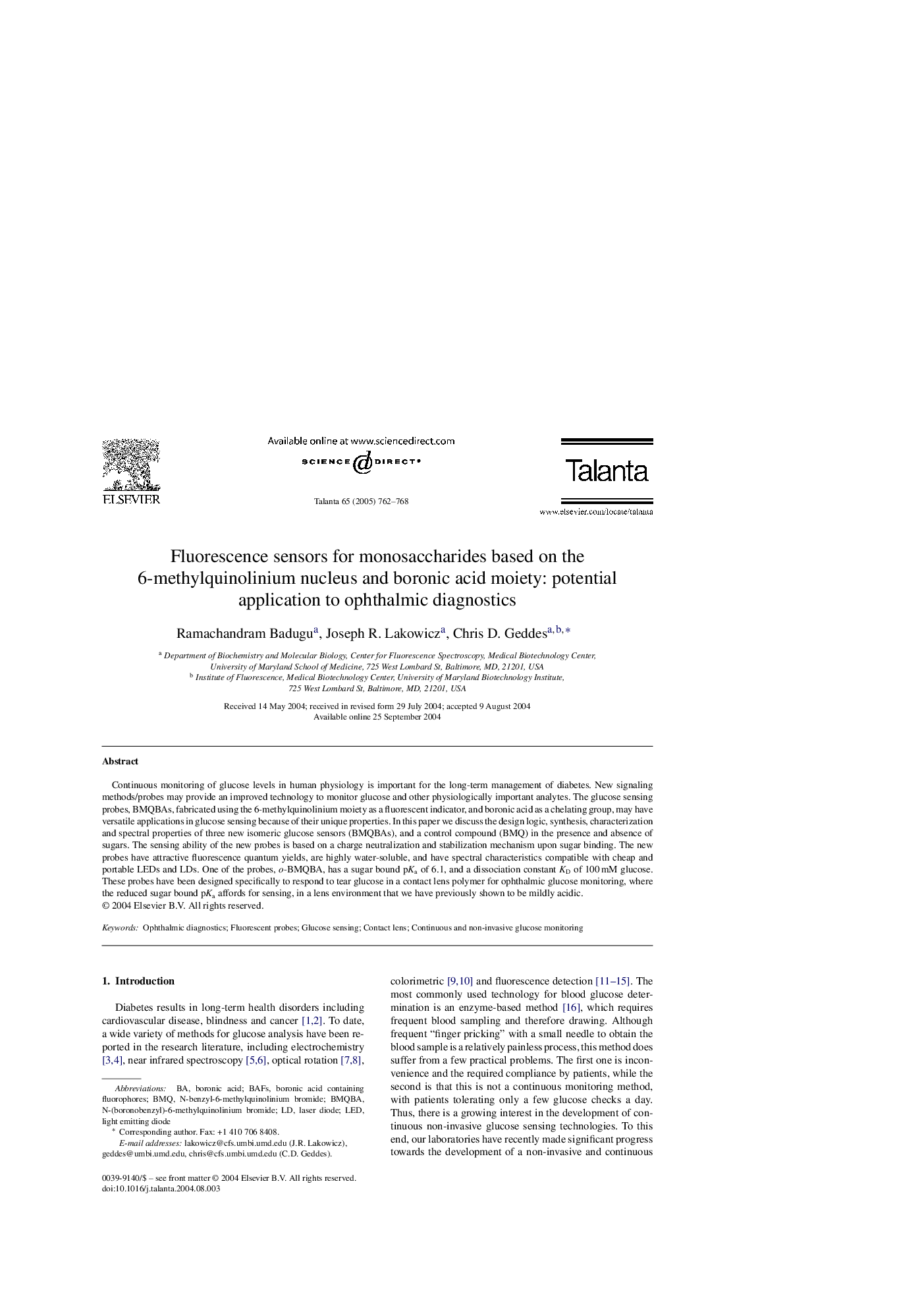| Article ID | Journal | Published Year | Pages | File Type |
|---|---|---|---|---|
| 10561598 | Talanta | 2005 | 7 Pages |
Abstract
Continuous monitoring of glucose levels in human physiology is important for the long-term management of diabetes. New signaling methods/probes may provide an improved technology to monitor glucose and other physiologically important analytes. The glucose sensing probes, BMQBAs, fabricated using the 6-methylquinolinium moiety as a fluorescent indicator, and boronic acid as a chelating group, may have versatile applications in glucose sensing because of their unique properties. In this paper we discuss the design logic, synthesis, characterization and spectral properties of three new isomeric glucose sensors (BMQBAs), and a control compound (BMQ) in the presence and absence of sugars. The sensing ability of the new probes is based on a charge neutralization and stabilization mechanism upon sugar binding. The new probes have attractive fluorescence quantum yields, are highly water-soluble, and have spectral characteristics compatible with cheap and portable LEDs and LDs. One of the probes, o-BMQBA, has a sugar bound pKa of 6.1, and a dissociation constant KD of 100Â mM glucose. These probes have been designed specifically to respond to tear glucose in a contact lens polymer for ophthalmic glucose monitoring, where the reduced sugar bound pKa affords for sensing, in a lens environment that we have previously shown to be mildly acidic.
Keywords
Related Topics
Physical Sciences and Engineering
Chemistry
Analytical Chemistry
Authors
Ramachandram Badugu, Joseph R. Lakowicz, Chris D. Geddes,
